The Iceberg Thermal IceSLEET G6 Stealth Review: Top-Tier Colossal Tower Cooler
by E. Fylladitakis on October 13, 2022 8:00 AM ESTTesting Results, Maximum Fan Speed
To begin with, we are having a look at the IceSLEET G6 Stealth with its stock 140 mm fan running at its maximum speed.
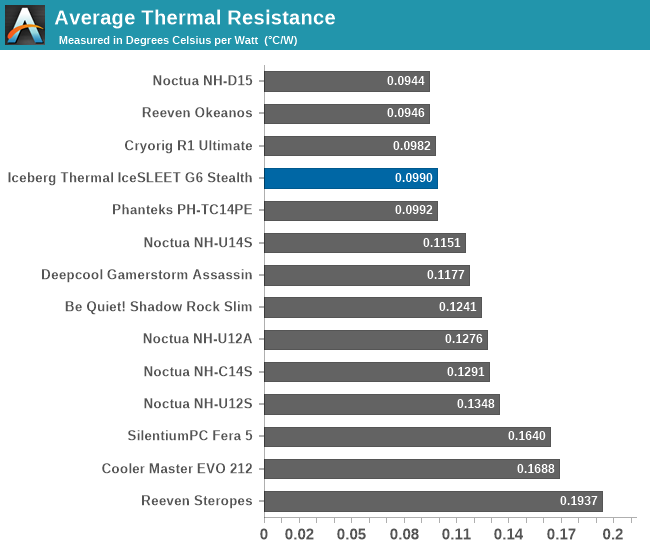
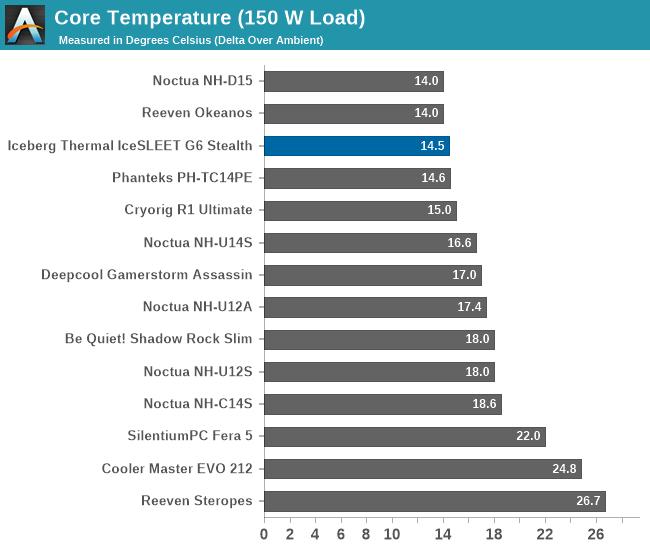
| Core Temperature, Constant Thermal Load (Max Fan Speed) |
Due to its enormous mass, we expected the IceSLEET G6 Stealth to land near other similarly-sized products, such as the Noctua NH-D15 and the Phanteks PH-TC14PE. We were not mistaken, as the average thermal resistance of 0.099 °C/W is extremely close to the figures we received from those other coolers.
The IceSLEET G6 Stealth seems to have trouble coping with very low loads, as the thermal resistance is unnaturally high in those scenarios, hinting that the energy transfer is rather slow. As the load increases and the temperature gap between the cooler and the cooling medium (air) widens, the thermal resistance drops considerably.
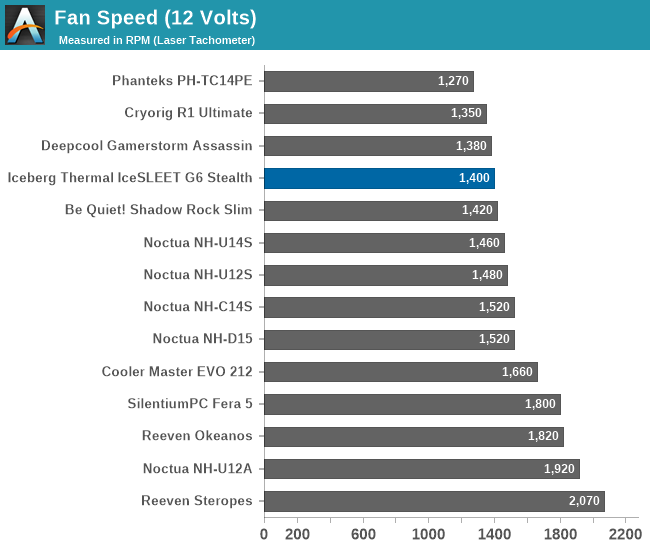
The IceSLEET G6 Stealth is, as its name also suggests, a product designed with acoustics in mind. Its 140 mm fan spins at exactly 1400 RPM and makes a rather good job of keeping noise levels relatively low. The cooler is clearly audible with the fan running at maximum speed but even then the noise pressure figures are tolerable for typical stress usage scenarios.

Testing Results, Low Fan Speed
Switching things up a bit, let's next take a look at cooler performance with the Iceberg Thermal 140 mm fan taken down to half speed.
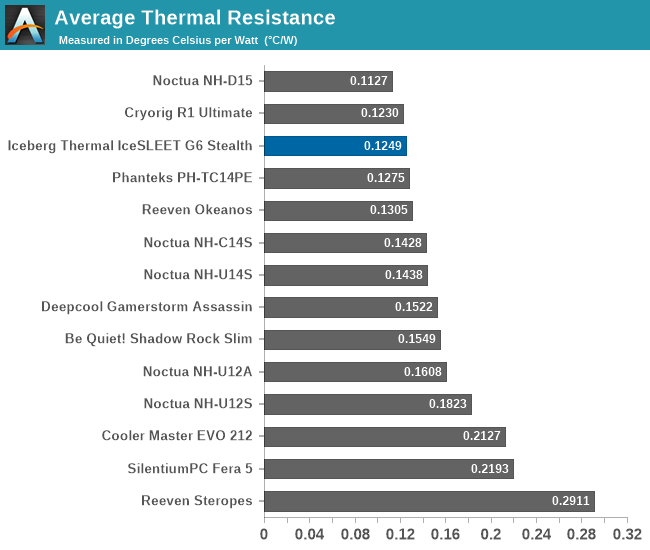
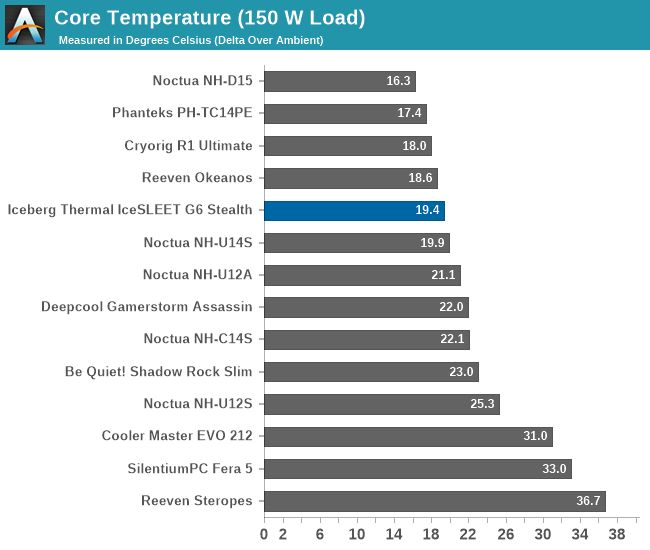
| Core Temperature, Constant Thermal Load (Low Fan Speed) |
After reducing the speed of the fan to about 700 RPM, the thermal performance of the IceSLEET G6 Stealth degraded only slightly, as expected from a cooler with so much mass and surface area. Once again, the thermal performance of the IceSLEET G6 Stealth is on par with that of other similarly sized coolers. It also follows the same pattern, with mediocre thermal resistance at very low loads and exceptional figures when the load is very high.
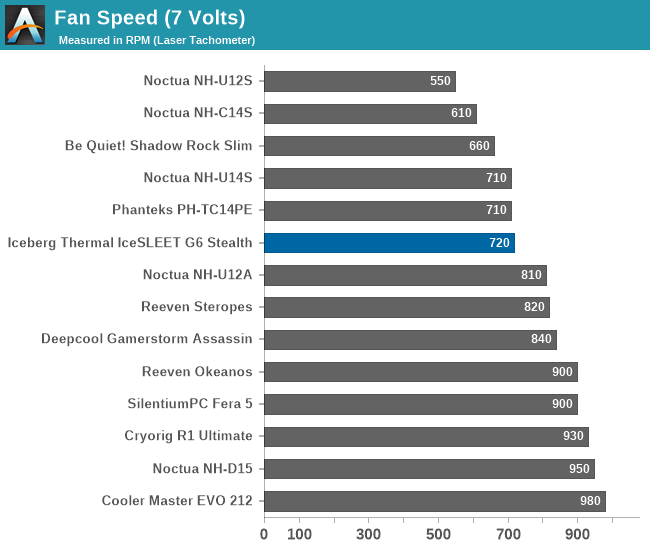
Dropping the speed of the Iceberg Thermal 140 mm fan down to 720 RPM makes the IceSLEET G6 Stealth cooler practically inaudible. With no direct line of sight, it is impossible to discern whether the fan is spinning or not even if very close to the cooler. It would take a very quiet room and very close proximity to hear the fan under such conditions.
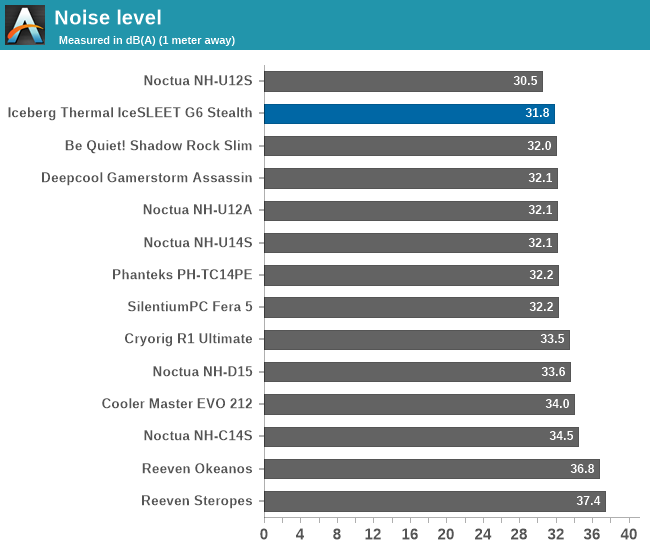
Thermal Resistance VS Sound Pressure Level
During our thermal resistance vs. sound pressure level test, we maintain a steady 100W thermal load and assess the overall performance of the coolers by taking multiple temperature and sound pressure level readings within the operating range of the stock cooling fans. The result is a graph that depicts the absolute thermal resistance of the cooler in comparison to the noise generated. For both the sound pressure level and absolute thermal resistance readings, lower figures are better.
This chart reveals where the IceSLEET G6 Stealth lands at compared to its major competitors. We can see that practically only the Noctua NH-D15 slightly outperforms the Iceberg Thermal cooler, with every other cooler matching the same thermal performance at higher sound pressure levels.


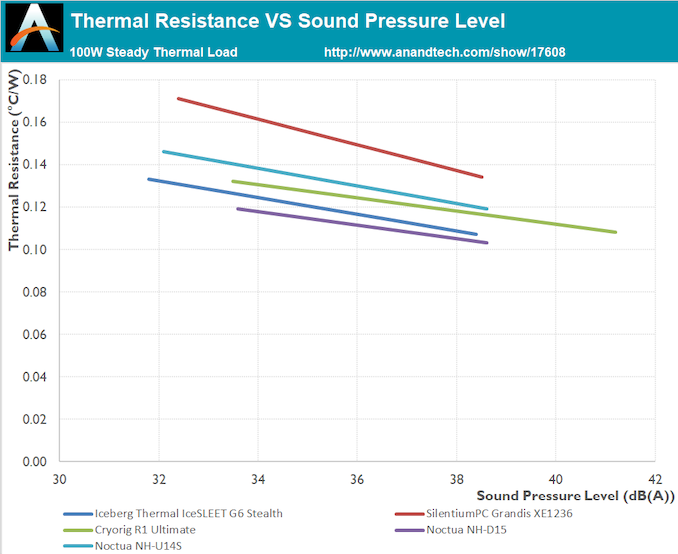








22 Comments
View All Comments
Ryan Smith - Monday, October 17, 2022 - link
"I think there should be multiple loads they should be tested at."In fact we do just that. If you check the drop-downs next to the core temperature graphs, we test 60W up to 340W. 150W is the default, since it's roughly in the middle of what current CPUs have been doing (though with Ryzen 7000 coming out, that's pushing the average higher).
RKCook - Monday, October 17, 2022 - link
Nice article.Any comments on putting this into a vertical ATX case and its torquing effect on the motherboard.
A kilogram weight protruding from the side seems like it would put a lot of torque onto the cpu socket, potentially to the failure point.